
The Free Press

This story is by Bari Weiss, Isaac Grafstein, Suzy Weiss, Michael Shellenberger, Peter Savodnik and Olivia Reingold.
On the afternoon of January 8, 2021, Twitter decided to permanently suspend the account of Donald Trump. It was the first and only time a sitting head of state was kicked off the platform.
Twitter ostensibly kicked Trump off because of two tweets he fired off that morning. But on the day he was banned, executives and lower-level employees alike privately admitted that neither of the president’s tweets violated the platform’s rules.
How the company went from its initial judgment that morning—that Trump was not in violation of Twitter policy—to where it landed in the afternoon is a story of a struggle inside the company, under enormous pressure, to reimagine and tinker with official policies to do what so many inside the company had long wanted to do: Ban the president.
Many Americans believed that day—and continue to believe—that the decision to ban Trump was more than justified. Indeed, that it was long overdue. They thought that by refusing to accept the results of the election, Trump was not only compromising the integrity of the democratic process, but also putting people in real danger. The riot at the Capitol two days prior had resulted in five deaths.
Given Trump’s “fight like hell” comment at the Stop the Steal rally on January 6, even some federal judges have debated whether those comments were “arguable incitement” to violence.
Trump did not make that “fight like hell” comment on Twitter. But as far back as January 2018, the company stated that “we review Tweets by leaders within the political context that defines them, and enforce our rules accordingly.” In banning the president in 2021, Twitter was responding in real time to what then-CEO Jack Dorsey called “an extraordinary and untenable circumstance, forcing us to focus all our actions on public safety.”
But other Americans—and other leaders across the West—felt that Twitter’s actions against a sitting head of state set a dangerous precedent.
The company’s decision to ban Trump immediately raised alarms around the world, including from French President Emmanuel Macron, German Prime Minister Angela Merkel, and Mexico's leftist President Andres Manuel Lopez Obrador.
Macron told an audience he didn’t “want to live in a democracy where the key decisions” were made by private players. “I want it to be decided by a law voted by your representative, or by regulation, governance, democratically discussed and approved by democratic leaders,” the French president said.
Merkel’s spokesperson called Twitter’s decision to ban Trump from its platform “problematic” and added that the freedom of opinion is of “elementary significance.”
Said Obrador, “I don’t like anybody being censored or taking away from the right to post a message on Twitter or Facebook. I don’t agree with that, I don’t accept that.”
Twitter’s ability to deny a sitting head of state access to its platform has serious implications for democratic rule and freedom of speech around the world. That’s why for years, the social network had resisted calls to ban Trump: Blocking a world leader from Twitter or removing his or her controversial tweets would hide important information that the public should be able to see and discuss. “Our mission is to provide a forum that enables people to be informed and to engage their leaders directly,” the company wrote in 2019. Twitter’s aim, they said, was to “protect the public’s right to hear from their leaders and to hold them to account.”
But by January 6, 2021, employees were organizing via Slack, clamoring for Trump to be removed.
There were dissenters inside Twitter. “Maybe because I am from China,” said one employee on January 7, “I deeply understand how censorship can destroy the public conversation.”
Voices like that one appear to have been a distinct minority within the company. Across Slack channels, many Twitter employees were upset that Trump hadn’t been banned earlier.
“There is a lot of employee advocacy happening,” wrote one Twitter employee on January 6. “We have to do the right thing and ban this account,” said another on January 8. On that day, the Washington Post published an open letter signed by over 300 Twitter employees to Dorsey demanding Trump’s ban. “We must examine Twitter’s complicity in what President-Elect Biden has rightly termed insurrection,” it read.
But that same morning, Twitter staff assigned to evaluate tweets had quickly concluded that Trump had not violated Twitter’s policies. “I think we’d have a hard time saying this is incitement,” wrote one staffer with respect to Trump’s first tweet. “It’s pretty clear he’s saying the ‘American Patriots’ are the ones who voted for him and not the terrorists (we can call them that, right?) from Wednesday.”
Another staffer agreed: “Don’t see the incitement angle here.”
“I also am not seeing clear or coded incitement in the DJT tweet,” wrote Anika Navaroli, a Twitter policy official. “I’ll respond in the elections channel and say that our team has assessed and found no vios”—that is, violations—“for the DJT one.”
Minutes later, Twitter’s Safety team decided that Trump’s second tweet was also not in violation of any rule. They were unequivocal: “It’s a clear no vio. It’s just to say he’s not attending the inauguration.”
(Later, Navaroli would testify to the House Jan. 6 committee: “For months I had been begging and anticipating and attempting to raise the reality that if nothing—if we made no intervention into what I saw occurring, people were going to die.”)
After the relevant teams at the company determined that both of Trump’s tweets were not in violation of Twitter policy, Vijaya Gadde—Head of Legal, Policy, and Trust—asked a company research director whether the tweets might be interpreted as “coded incitement to further violence.” She cited the use of the term “American patriots” as potential evidence.
A few minutes later, Twitter employees on the Scaled Enforcement team espoused similar reasoning. They suggested that Trump’s tweet may have violated Twitter’s Glorification of Violence policy, if the phrase “American Patriots” were interpreted to refer to the rioters—as opposed to “the 75,000,000 great American Patriots who voted for me,” which was what Trump actually tweeted.
One staffer noted that members of this team had come to view Trump “as the leader of a terrorist group responsible for violence/deaths comparable to Christchurch shooter or Hitler and on that basis and on the totality of his Tweets, he should be de-platformed.”
By the afternoon, some Twitter staff had grown increasingly hysterical. In a private conversation with a software engineer, Yoel Roth—Head of Trust and Safety—remarked that “multiple tweeps [Twitter employees] have quoted the Banality of Evil suggesting that people implementing our policies are like Nazis following orders.”
Less than an hour later, Twitter announced Trump’s permanent suspension “due to the risk of further incitement to violence.”
This action was unprecedented, and did not apply to other heads of state and political leaders around the world—including ones that had very clearly incited violence in Pakistan, Nigeria, Ethiopia, and other nations.
In June 2018, Iran’s Ayatollah Ali Khamenei tweeted, “#Israel is a malignant cancerous tumor in the West Asian region that has to be removed and eradicated: it is possible and it will happen.” Twitter neither deleted the tweet nor banned the Ayatollah.
In October 2020, the former Malaysian Prime Minister Mahathir Mohamed said that it was “a right” for Muslims to “kill millions of French people.” Twitter deleted the tweet, but allowed Mohamed to remain on the platform.
Muhammadu Buhari, the President of Nigeria, incited violence against pro-Biafra groups.“Those of us in the fields for 30 months, who went through the war,” he wrote, “will treat them in the language they understand.” Twitter deleted the tweet but didn't ban Buhari.
But Twitter executives did ban Trump, even though key staffers said that Trump had not incited violence—not even in a “coded” way.
After the announcement, the mood among many Twitter employees was ecstatic. They back-slapped one another for the “extraordinary acts of awesomeness going on around Twitter right now.” That day, many staffers sent private, heartfelt notes to Roth and Gadde, congratulating them for the decision.
A few days later, one employee wrote in the health-discuss Slack channel, “For the longest time, Twitter’s stance was that we aren’t the arbiter of truth which I respected but never gave me a warm fuzzy feeling.”
But some executives were more sober. Twitter’s CTO Parag Agrawal—who would later succeed Jack Dorsey as CEO—told Head of Security Mudge Zatko: “I think a few of us should brainstorm the ripple effects” of Trump's ban. Agrawal added: “centralized content moderation IMO has reached a breaking point now.”
Taken together, reporting from the Twitter Files paints a clear picture: that a very small group of unelected individuals is making decisions about what the public is allowed to see and not see on Twitter; that they have developed many tools—operating without transparency—to influence public debates; and that their decision-making process was, till now, largely inscrutable.
The implications of all of this are far-reaching and not at all limited to one social media platform. Whether you agree or disagree with Twitter’s ban of President Trump is almost beside the point. The truth is that ultimately, what many find so disturbing isn’t that unelected executives at Twitter chose to ban a sitting head of state. It’s the fact that they had the power to do so—unaccountable to anyone but themselves—in the first place.
Less than a week after Trump’s ban, Dorsey wrote on Twitter that such a ban “sets a precedent I feel is dangerous: the power an individual or corporation has over a part of the global public conversation.”


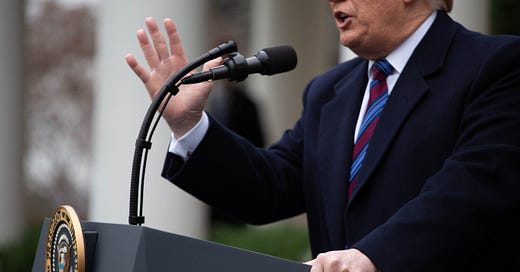

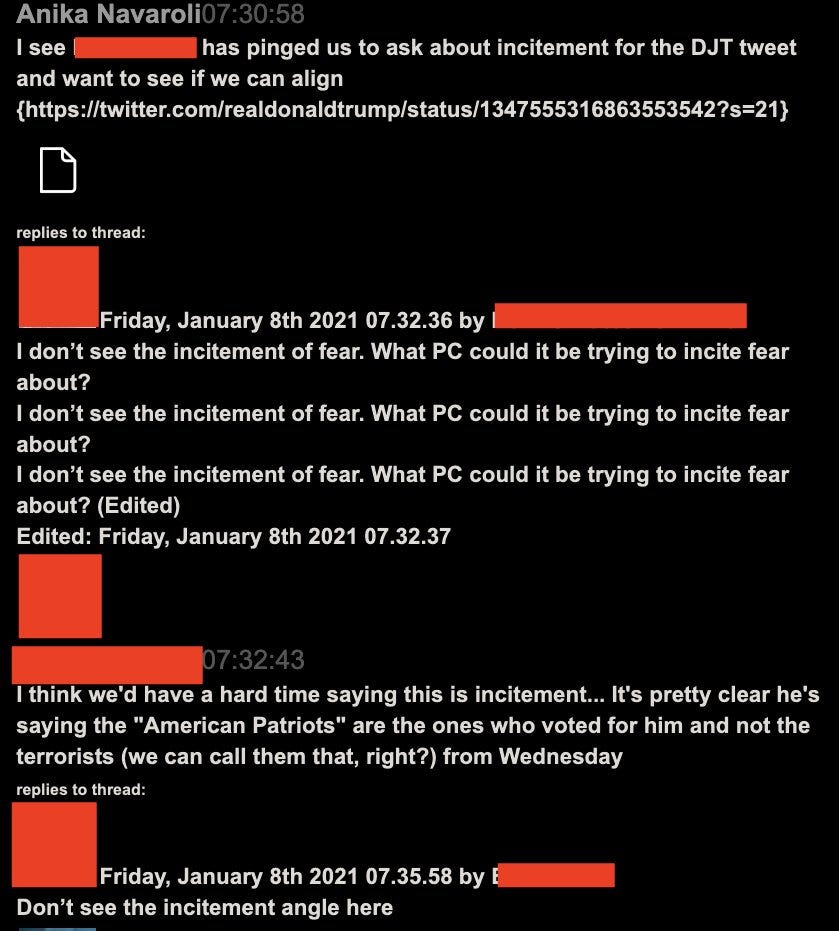

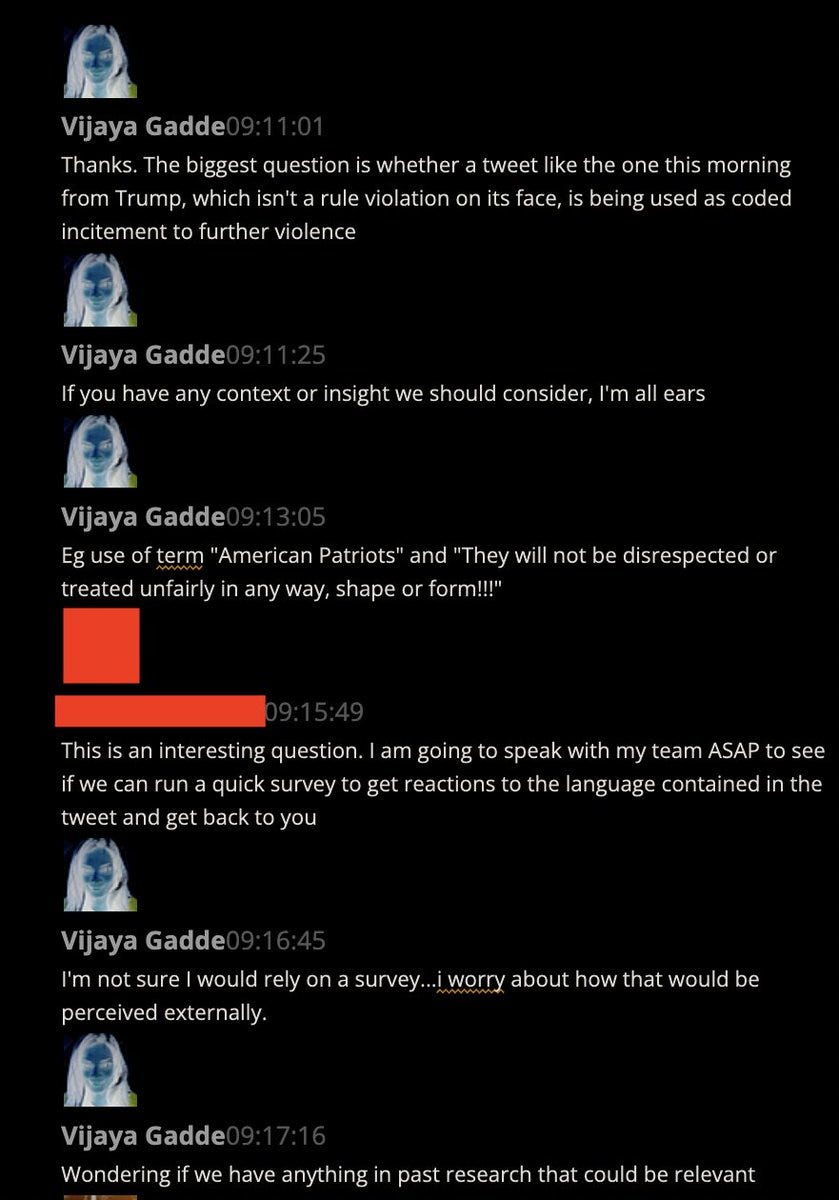

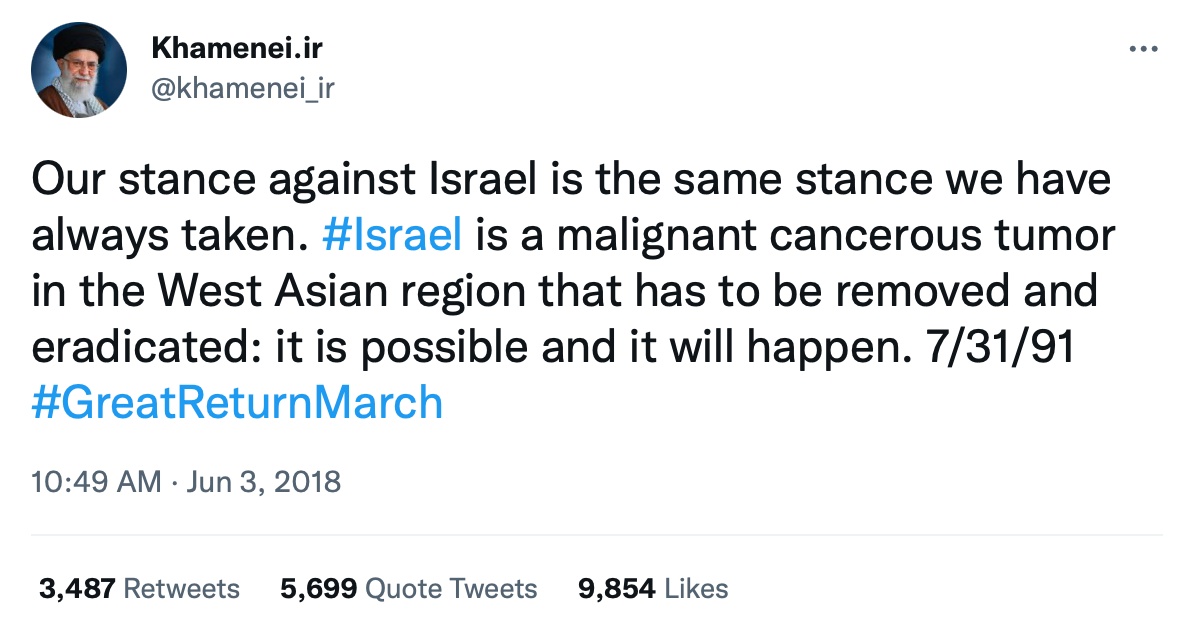
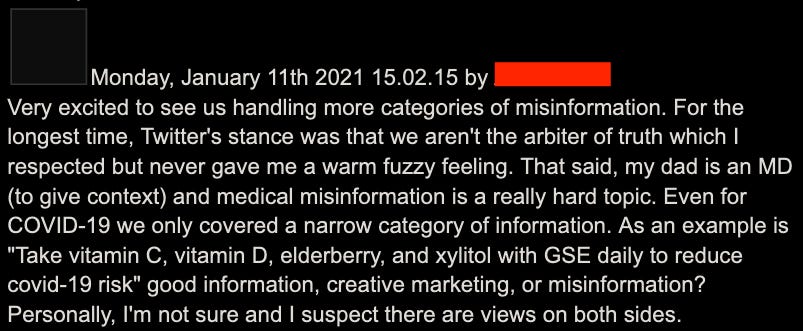
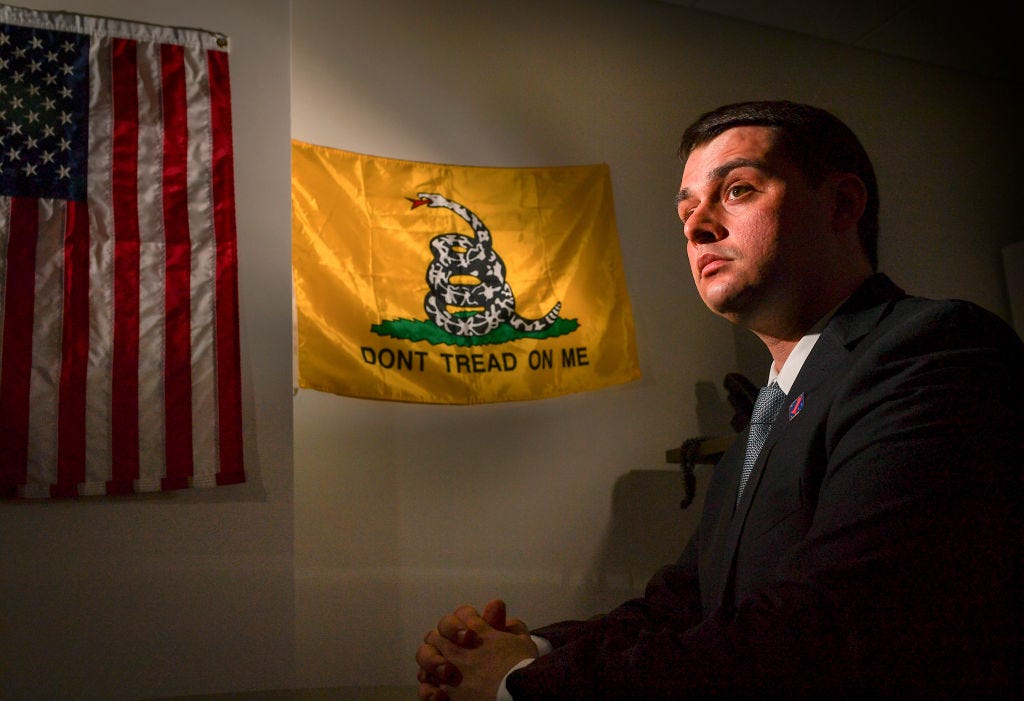

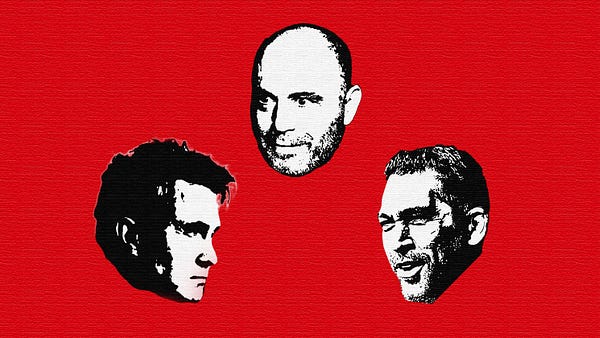

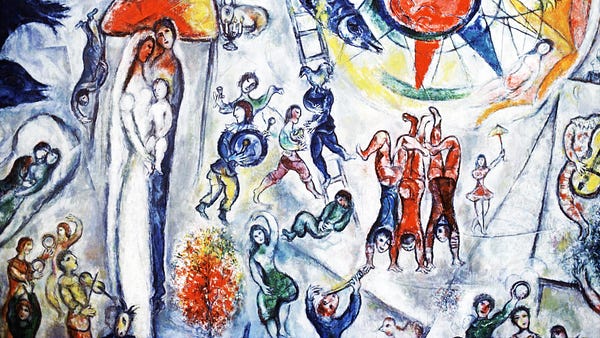

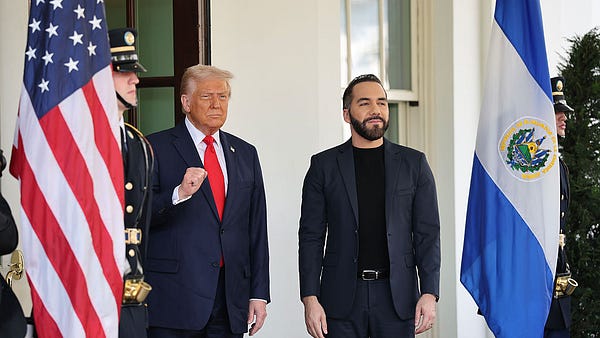

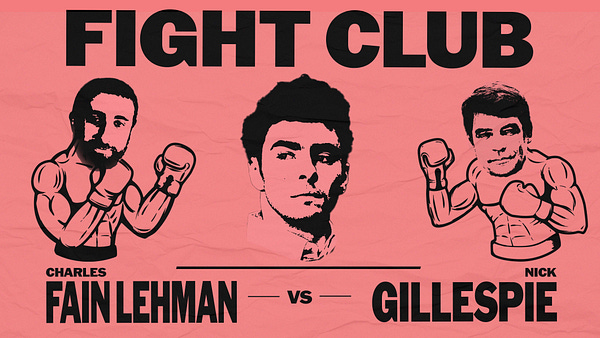

This thread between RT and Noah is a fascinating example of today’s polarized arguments where some feel the need to personally attack the other and “draw first blood” in order to aggravate the response from other side making it impossible to have a civil discussion. This is a strategy commonly deployed now and a trap we have to be careful not to step into. It’s one I experienced firsthand:
I organized a community meeting with the police to create a scheduling plan for parents to patrol the forest immediately adjacent to our high school where drug users (evidence: many needles in their tents) were living. It was apparently out of the police’s district, so we would patrol and inform them of what we found. A young woman (who did not rsvp) showed up recording us and asking questions that were clearly meant to aggravate the group and its mission. She seemed to be following a script and seemed ready to record whatever she could incite. I am now more aware of this technique and will now be prepared to also record the lead-up to these meetings so others can see the whole context. My goal is to expose this strategy and render it ineffective. It’s counter productive as you can see from the discussion in this post.
Go back through their thread and see if you can find the point of personal attack that diverted a healthy conversation. Let’s try not to play into that game and stay focused on discussion vs name-calling. The good guys eventually win.
Fight like hell?
You told that story but you didn’t give the full context absolving Trump of inciting violence. I wonder why that is. Are you doing the thing Elon Musk claims you’re doing again? A foot in each camp?